

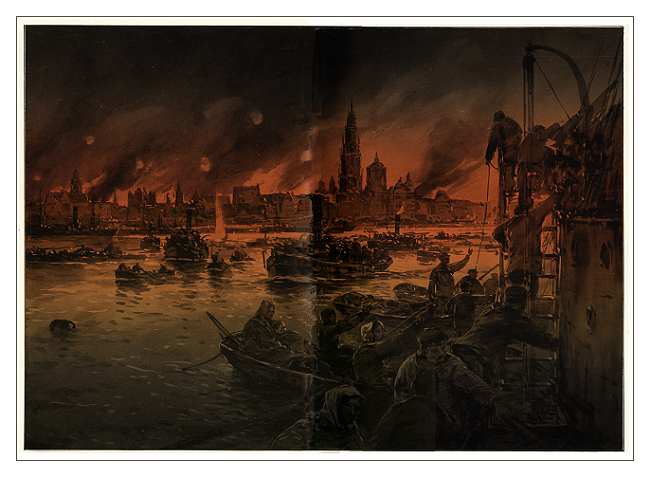
a Short Synopsis
When the Belgian field army retreated from Liege in August 1914, it fell back on the fortified camp of Antwerp, the Belgian National Redoubt, to await assistance from either France or Great Britain. Antwerp, with its triple ring of fortifications spanning a circumference of more than 100 kms was at the time considered an impregnable position. But the Belgian Field Army and Antwerp garrison of altogether some 120 000 to 150 000 men was not strong enough to hold the forts in face of a determined assault, especially when the assaulting forces were backed by mobile heavy siege aritillery, at the time a technological marvel weapon. Antwerp was the third largest port in the world, but as per treaty with the Netherlands, in time of war the river Scheldt was blocked to all military traffic at Dutch discretion. The river was closed in early August and no British reinforcements could be expected via that route without provoking Dutch entry into the war on the German side. And in any case, neither of the two Entente Powers were able to spare forces until early October, after the Battles of the Marne and the Aisne. By then the British forces sent to Antwerp, some 8000 Naval Brigade troops, were insufficient to hold the line.
Meanwhile, from mid-August onwards, the Belgian field army, government and King remained in the Antwerp fortified camp, conducting several large scale sorties against German positions to the south. This so unmoved the German command that at critical points during the Battle of the Marne, German units were sent north to reinforce the line against Belgian attacks.
By September it was decided to definitively remove the threat posed by the Belgian army. Albert I, King of the Belgians refused German diplomatic offers to take no further part in the fighting in Europe. German forces besieging the line of forts protecting the city were reinforced and heavy German and Austrian siege artillery was brought up. The intention was to take Antwerp and force Belgium out of the war by either capturing or decisively defeating the Belgian army. This had to be done before British and French reinforcements arrived at the besieged city.
The main battle for Antwerp started on September 27. The last fort surrendered on October 10, one day after German forces took possesion of the city. On the whole, the Belgian Army and British forces were able to escape the city to make their way to the Belgian coast. Later events during the Great War far eclipsed the siege and capture of Antwerp in terms of manpower, duration, destruction, loss of life and misery : but at the time the fall of the fortified camp of Antwerp was considered a dramatic event and a grave loss to the cause of the Entente Powers. The Germans made much of the fall of Antwerp, regarding it as a consolation prize for having failed to take Paris the month before; but as military river traffic was forbidden by the Netherlands authorities who held control over the river mouthing, and as other maritime transport was blockaded by the Royal Navy, in the end Antwerp was never turned into the proverbial 'pistol aimed at the heart of England.' Nor did the city play a part in German defensive strategy as planned during the final months of the war in 1918. Plans to turn the great fortress into the northern lynchpin of a German line of defense running along the Nethe and Meuse rivers, were never carried out due to the sudden cessation of hostilities in November 1918.
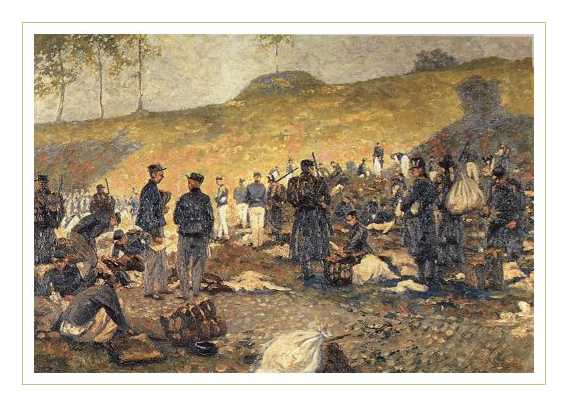
When the war broke out in August journalists from all over the world flocked to Belgium, hoping to get near the fighting. Numerous American and British reporters and photographers were present during the siege of Antwerp. Their reports and photos make for fascinating reading.
Several accounts published in prominent British publications and weekly news magazines have been reproduced in the links section. Bear in mind that these are not to be considered incontestable factual accounts. You will find a reasonable amount of rumor and propaganda, especially considering the assumed prevalence of spies and foreplanning attributed to German malevalence. There is also a tendency to downplay Entente setbacks and to exaggerate the abilities of Belgian soldiery. But such is to be expected in wartime. The articles are otherwise well written and give a wealth of facts. Bear also in mind that they were all written while the war was going on, consequently unlike ourselves, the authors cannot benefit from the luxury of hindsight.
Particularly interesting is the first-hand account written by American journalist E. Alexander Powell in his book 'Fighting in Flanders'. He was present in Antwerp from mid August 1914 till after the fall of the city in October and as a neutral was allowed to pass through the battle-lines several times. His account is fascinating, well detailed and very vividly written. His style of writing, which at times can be quite ironical if not downright comical, even now nearly 90 years after the events, makes for adventurous and engrossing reading. He was accompanied by photographer Donald Thompson who subsequently enjoyed a distinguished career as war-photographer and cinematographist on almost every front, later becoming staff member of the prestigious American magazine 'Leslie's'.
Many participants who in one manner or another were present during the Siege of Antwerp, wrote books of memoires. They gave their account of the events of 1914, including what they witnessed during the siege. Many of these books were published almost immediately afterwards, in late 1914 and in 1915. Consequently their view of events is uncolored by the later course of the Great War and helps convey to us the dramatic impact the fight for Antwerp had for people at the time.
With hindsight we can now safely say that the city had no greater luck than to fall relatively unharmed into the hands of the German army and to be far removed from the subsequent battle areas. Occupation and the rigors of hunger and deprevation were horrible things to be endured it is sure. But for Antwerp to have shared the fate of such front-line cities as Ypres, Verdun or Rheims would have been far worse.
For a more detailed explanation of events see the following website 'Brave Little Belgium'
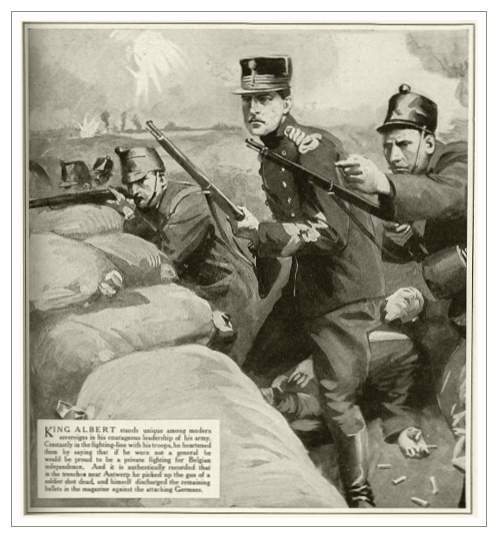
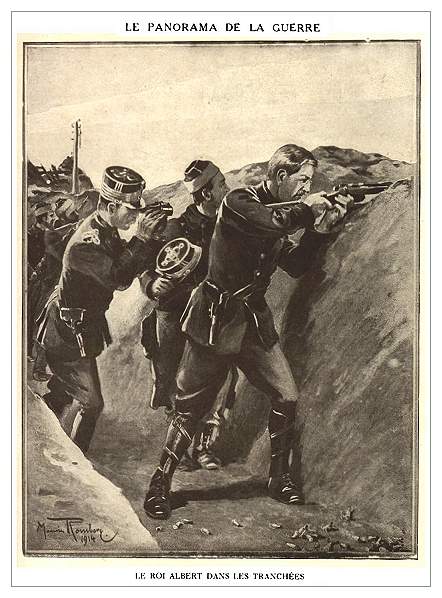
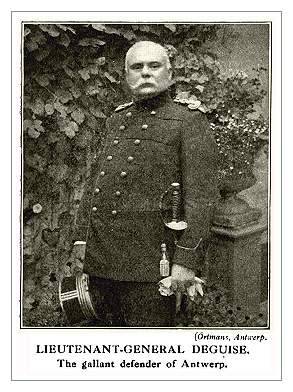
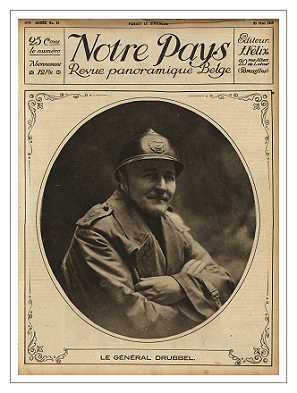
“It happens in the lives of nations, as in the lives of individuals, that a defeat which seems at the time crushing sometimes proves in the end to have been a victory of a sort. It requires a large faith and usually the perspective of history to reach these reassuring conclusions, but by some quick, spiritual apprehension the Belgians began to realize, dimly at first, that their army had, after all, executed a clever movement in withdrawing from Antwerp; had those troops remained in the fortress they would have been taken like rats in a trap, whereas now it was possible that they might join the Allies' left wing, or at least menace the German right wing - bent back, it was said, as far as Ypres.”
From ‘Belgium Under the German Occupation, A Personal Narrative’ (1919) by Brand Whitlock, US Minister in Belgium during the Great War
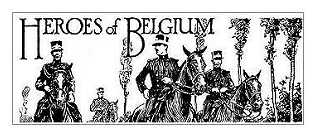
Links to Magazine Articles and Book Excerpts
Excerpts from British and American Books
- Fighting in Flanders (by American reporter E. Alexander Powell / photos by Donald Thompson))
- The Fall of Antwerp (by American journalist Arthur Ruhl)
- A Surgeon in Belgium (memoirs of British volunteer surgeon Henry Souttar)
- The Log of a Noncombatant (by American journalist Horace Green)
- A War Nurse's Diary at Antwerp (memoirs of a volunteer nurse at Antwerp)
- An American Diplomat Describes the First Zeppelin Attack (by Hugh Gibson of the American Delegation)
- At the Front with Three Armies (by American journalist Granville Fortescue)
- From Antwerp to the Yser Front (by American journalist Granville Fortescue)
- The Soul of the War (by British journalist Philip Gibbs)
- A British Nurse in Ostend and Antwerp (by novelist May Sinclair)
- Eye-Witness in Antwerp (by British Journalist J.M.N. Jeffries)
- Antwerp Adventure (by Rev. Canon Foster - Royal Navy Chaplain)
- A Woman's Experiences in the Great War (by Louise Mack - Australian writer)
- Belgian Refugees in Holland (by Louise Mack - Australian writer)
- Hacking Through Belgium
- Belgium Under the Occupation
- The Great War in Europe (a multi-volume history)
- The History of the Great War (a multi-volume history)
- The Great World War (a multi-volume history)
- The Great Battles of the Great War : a Daily Chronicle War Library Book
Excerpts from Belgian, Dutch and German Books and Magazines

- De Val van Antwerpen (by Belgian author Jozef Muls - text in Flemish/Dutch)
- Slagveld der Natieen (by Dutch journalist Frank Gericke - text in Flemish/Dutch)
- Notre Jass de 1914 - la Retraite d'Anvers (text in French)
- La Défense de la Redoute de Dorpveld - 1914 (text in French)
- De Vluchtelingen - 1914 (text in Flemish/Dutch)
- Een Bladzijde Geschiedenis van Antwerpen - 1914 (text in Flemish/Dutch)
- Antwerpen Gebombardeerd (text in Dutch)
- De Belgen in Holland (text in Dutch)
- La Siège d'Anvers 01 - Opérations autour d'Anvers (following texts in French)
- La Siège d'Anvers 02 - Operations autour de Wavre-Sainte-Catherine
- La Siège d'Anvers 03 - Duffel Pendant la Siège
- La Siège d'Anvers 04 - A Contich
- La Siège d'Anvers 05 - Le Fort et la Ville de Lierre et Broechem
- La Siège d'Anvers 06 - Episodes Divers
- La Siège d'Anvers 07 - Le Grand Exode
- La Siège d'Anvers 08 - La Chute d'Anvers
- La Siège d'Anvers 09 - La Retraite
- Aerschot - 19 Aout 1914
- A la Première Attaque du Camp Retranché d'Anvers
- Deuxième Sortie d'Anvers - 9-12 Septembre 1914
- Le 1er Régiment de Lanciers à Termonde
- Le Caporal Tresignies, Le Heros de Pont-Brulé
- l'Auto Blindé No. 7
- Combat au Fort de Wavre-Sainte-Catherine
- l'Agonie du Fort de Lierre
- Les Derniers Débris d'Anvers - la Retraite
- Journal d’un Assiégé à Anvers
- l'Exode d'Anvers
- La Retraite d'Anvers
- Quer durch Belgien
Excerpts from British Magazines
- The Great War Weekly
- The War of the Nations
- The War Illustrated 1
- The War Illustrated 2
- The Times History of the War
- Everyman Special Belgian Relief Issue
- The Fall of Antwerp from 'The Manchester Guardian'
- TP's Journal of Great Deeds of the Great War 1
- TP's Journal of Great Deeds of the Great War 2
- TP's Journal of Great Deeds of the Great War : The Goliath Gun
'the Graphic Extras - the Second Phase'
Excerpts from French Magazines
- Le Bombardement de la Ville en 1914 (French text)
- Lettre d'Anvers - novembre 1918 (French text)
- Après la Chute d'Anvers (French text)
Excerpts from American Magazines
- The Fall of Antwerp from 'Collier's' (by American journalist Arthur Ruhl)
- A Woman in Battle from 'Collier's' (by American playwright Ms. Tennyson Jesse)
Links to Photo Galleries
- Antwerp Forts 1
- Antwerp Forts 2
- Antwerp Forts 3
- Minerva : Belgian Armoured Cars
- Against All Odds : Belgian Troops Hold the Line
- Belgian Soldiers in the Firing-Line
- Belgian Priests at War (new material added September 2001)
- The Soldier King
- Zeppelins Bomb Antwerp
- Burning Oil Tanks
- Pontoon Bridge
- Belgian Postcards
- German Postcards
- British Field Hospital in Antwerp
- Illustrierter Kriegs Kurier
- The Naval Brigade in Antwerp
- Fight for the City
- From Sketch to Drawing
- Fleeing the City
- Refugees
- Stereopticons
- On the Nethe : Transformations of a Photograph
- From a French Newspaper
- Anti-Aircraft Gun on Antwerp Cathedral
- Color Prints
- Drawings from a French Children's Magazine
- From a German Childrens Booklet
- Occupation
- Pillaging a German train
- Postscript : 1918
- 20 Years After
Full Pages from War-Time Magazines and Books
- Photos from 'The Manchester Guardian' : a British magazine
- Photos from 'the Illustrated War News' : a British magazine
- Photos from 'Nelson's Portfolio of Photographs' : a British magazine'
- Photos from 'the Great War' a British serial history magazine
- Photos from 'The War Illustrated' : a British magazine
- Photos from 'The War Budget' : a British magazine
- Photos from 'The War of the Nations' : a British magazine
- Photos from 'The Penny War Weekly' : a British magazine
- Photos from 'the Illustrated London News' - a British magazine
- Photos from 'the Graphic Extras - the Second Phase'
- Photos from 'Onze Helden' : a Belgian postwar commemorative volume
- Photos from 'l'Evenement' 1919 : a Belgian magazine
- Photos from 'l'Actualite Illustree' : a Belgian magazine
- Photos from '1914 Illustrée' : a Belgian magazine
- Photos from 'Le Temps Present : a Belgian magazine
- Photos from 'Wereldrevue' : a Belgian magazine from 1934
- Photos from 'La Grande Guerre' : a Belgian history magazine
- Photos from 'Le Miroir' : a French magazine
- Photos from 'Panorama de la Guerre' : a French serial magazine
- Photos from 'L'Illustration' : a French magazine
- Photos from 'J'ai Vu' : a French magazine
- Photos from 'la Guerre Documentee' : a French magazine
- Photos from 'Excelsior' : a French daily magazine

- Photos from the Reichsarchiv History
- Photos from 'das Intressante Blatt' : an Austrian magazine
- Photos from 'Illustrierte Kriegskurier' : a German occupation magazine
- Photos from 'Illustrierte Weltkriegschronik' : a German serial history magazine
- Photos from 'Die Woche' : a German weekly magazine
- Photos from 'Die Woche - Kriegsalbum'
- Photos from 'Illustrierte Kriegs-Blaetter'
- Photos from 'Deutsche Kriegs-Chronik des grossen Volkerkampfes'
- Photos from 'Berliner Iluustrirte Zeitung'
- Photos from 'Daheim'
- Photos from 'Der Weltkrieg im Bild'
- Photos from 'des deutschen Volkes Kriegstagesbuch'
- Photos from 'Illustrierte Geschichte des Weltkrieges'
- Photos from 'der Krieg in Wort und Bild'
- Photos from 'Panorama' a Dutch magazine
- Photos from 'the New York Times Mid-Week Pictorial' an American magazine
- Photos from 'Abbot's The Nations at War' issue 1917
- Photos and Drawings from 'Collier's'
- Photos from 'the New York Times Sunday Supplement'
- Photos from 'Lukomorie' : a Russian magazine from 1914
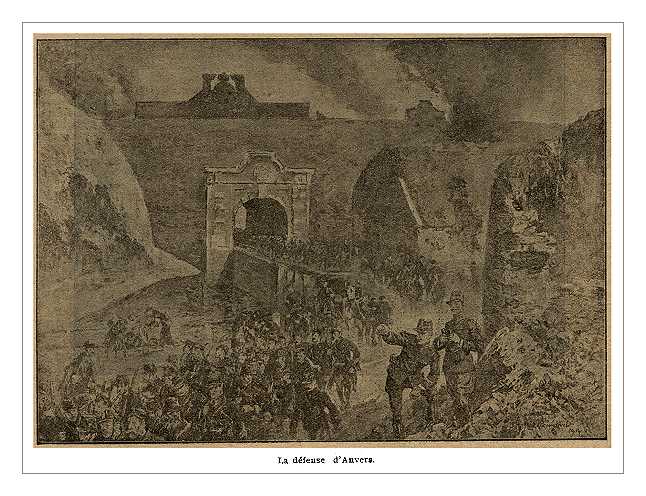
Belgian Troops by the Inner Fortifications